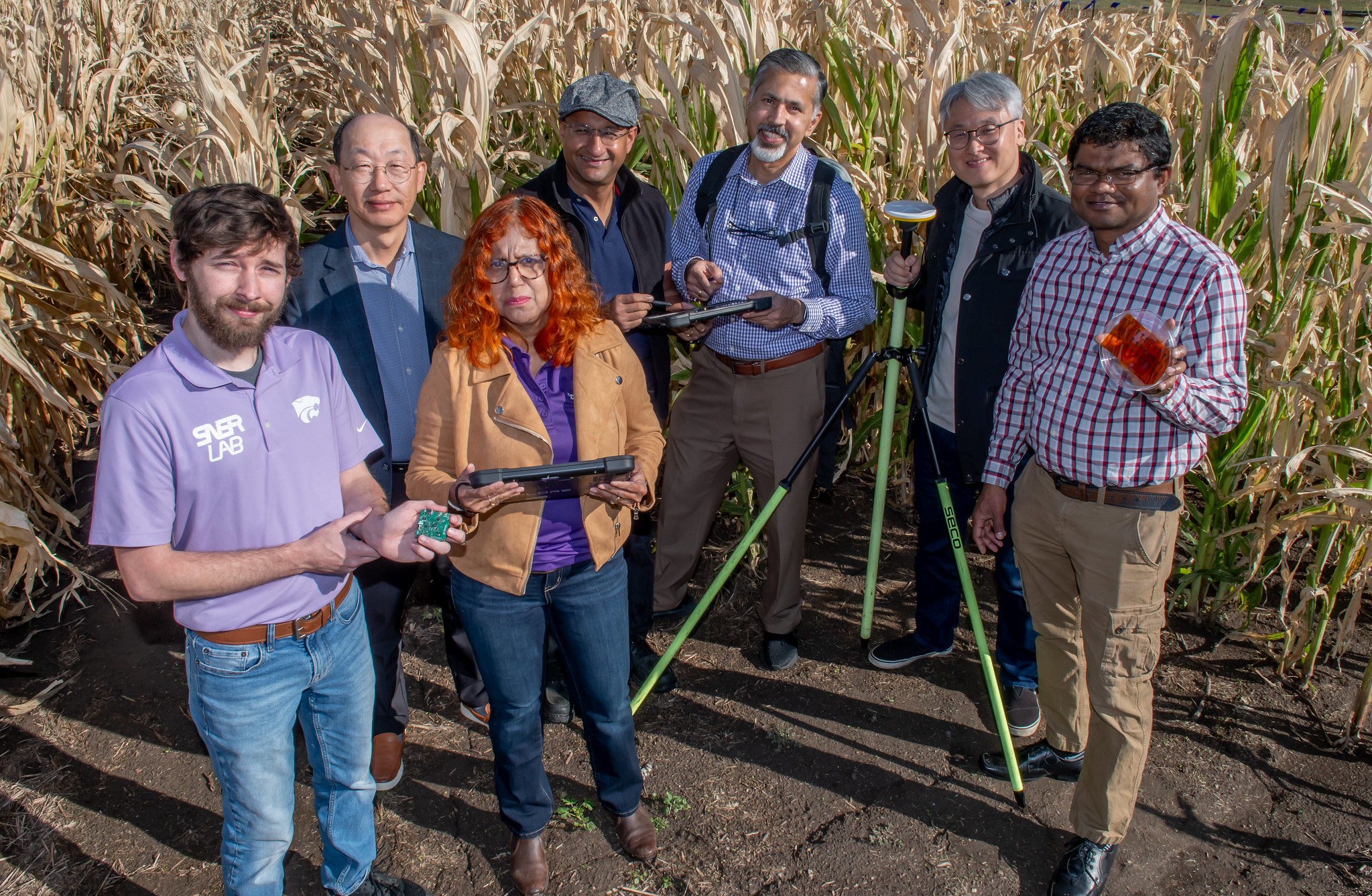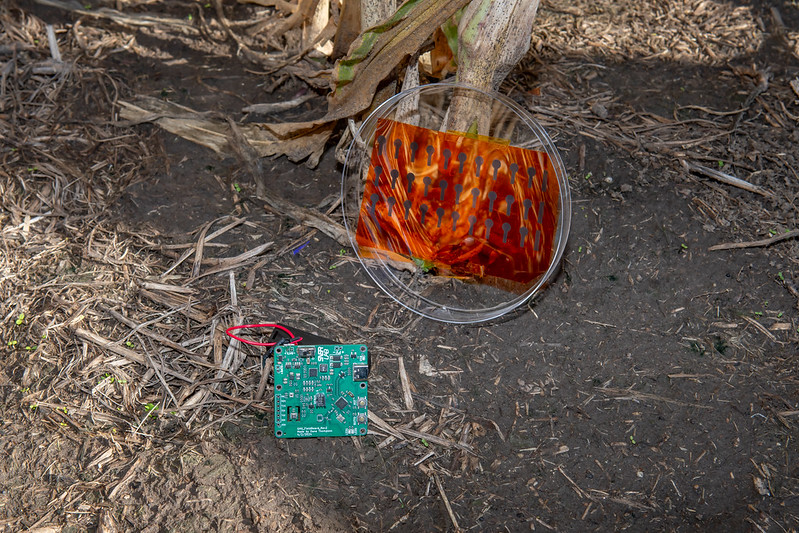K-State researchers aim to develop soil sensors that will measure farm fields at the nanoscale

National Science Foundation awards $2M for innovative project
Kansas State University researchers have received a $2 million award from the National Science Foundation’s Global Centers program to develop sensors that can more accurately detect nutrients, chemical compounds, soil microbiomes and greenhouse gases in soil.
Suprem Das, an associate professor in K-State’s Department of Industrial and Manufacturing Systems Engineering, said advancing soil sensors –and allowing farmers to collect soil information in real time – “is essential for advancing precision agriculture and promoting sustainable practices.”
Das will lead the project of more than a half dozen scientists aiming to develop sensors using atomically thin carbon sheets in which the actual sensing events occur at the nanoscale, defined as a dimension between 1 and 100 nanometers.
To visualize the nanoscale, consider that a single strand of human hair is approximately 80,000 to 100,000 nanometers wide; a sheet of standard copy paper is about 100,000 nanometers thick.
“When you make things smaller and smaller and eventually go to a nanoscale, you can fundamentally see different properties of those things you are measuring,” Das said. “We are able to exploit some of those properties to make these sensors so they can better measure the properties we’re after.”
Raj Khosla, head of K-State’s Department of Agronomy, notes that researchers think that employing sensors at a nanoscale may help them more accurately and more quickly measure nitrogen in farm fields.
Nitrogen is a vital nutrient in agriculture, enabling crops to capture sunlight energy through photosynthesis, and thus increase growth and yield.
“The U.S. Department of Agriculture’s innovation agenda says that by 2050, our country will reduce our nitrogen consumption by 50%,” Khosla said.
“But before we can think of reducing nitrogen waste in farm fields, we need to be able to measure how much of it is in the plant and soil,” he said. “The soil sensors we will be developing will allow us to measure rates of nitrates in soil instantly, and eventually we’ll work on measuring the rates of nitrogen in plants throughout the field.”

According to the U.S. Government’s National Nanotechnology Initiative, nanostructured materials are stronger and possess transformative physical properties that often make them better at conducting electricity and heat; are strong in mechanical strength; and are suitable for chemical detection, among other desired qualities.
In 2022, Khosla and a team of K-State agronomy researchers announced that they were working on a biodegradable soil sensor – roughly the size of a postage stamp – that could measure soil properties of a farm field so that in a matter of seconds, farmers could adjust water, nitrogen and other inputs to abundantly grow crops.
“In talking with Suprem, he told me, ‘well, you’re doing this at a micro scale; we can do it at a nanoscale,’” Khosla said. “So I was very excited. My emphasis is to create the ability to collect data at a high spatial density so that – for example, you’ve heard of No Child Left Behind – well, I have a policy that no corner of the farm field should be left behind.”
“I am focused heavily on agriculture and agricultural applications. Suprem and his team are focused on nanoscale materials, physics and engineering. I couldn’t have thought of a better team to come together.”
Khosla notes that on-farm use of nanoscale soil sensors is several years away, “but unless we start working now, it’s not going to happen.”
The K-State team includes experts in chemistry and chemical engineering, data science, omics (a field of biological study that analyzes the structure and function of an organism’s biomolecules and molecular processes), microbiology and metabolic engineering. Das said the project also is focused on technology development and commercialization, involving a team from K-State’s College of Business Administration.
The initial research and testing of the nanoscale sensors will take place on K-State’s North Farm in Manhattan, but Das said it will eventually spread to sites in the United States, Canada and the United Kingdom. Das also anticipates forming a Global Center to help train students in interdisciplinary research and education and increase understanding of the capability of the proposed sensors.
“When we think of these sensors, it’s not a matter of ‘if’ they will be developed; it’s a matter of ‘when’ they will be developed,” Das said. “And we’re a lot closer today than we ever have been before.”
He notes the variety of researchers with varied expertise on the team: “Our challenge will be to develop very robust algorithms to be able to translate millions of data points from these sensors, then process them, analyze them, store them and derive decisions in near real time for farmers to use.”
The project, Das said, is the first successful example of leveraging K-State’s GRIP (game-changing research initiation program) award to attract highly competitive federal grants.
Funding for K-State’s work begins on Jan. 1, 2025.
PHOTO: K-State researchers are beginning a project to develop sensors that that can more accurately measure soil properties. Pictured, l to r, are Garrett Peterson (electrical engineering), Jaebeom Suh (marketing), Ganga Hettiarachchi (agronomy), Bala Natarajan (electrical and computer engineering), Raj Khosla (agronomy), Jeongdae Im (civil engineering), Suprem Das (industrial and manufacturing systems engineering).(K-State Research and Extension news service)



